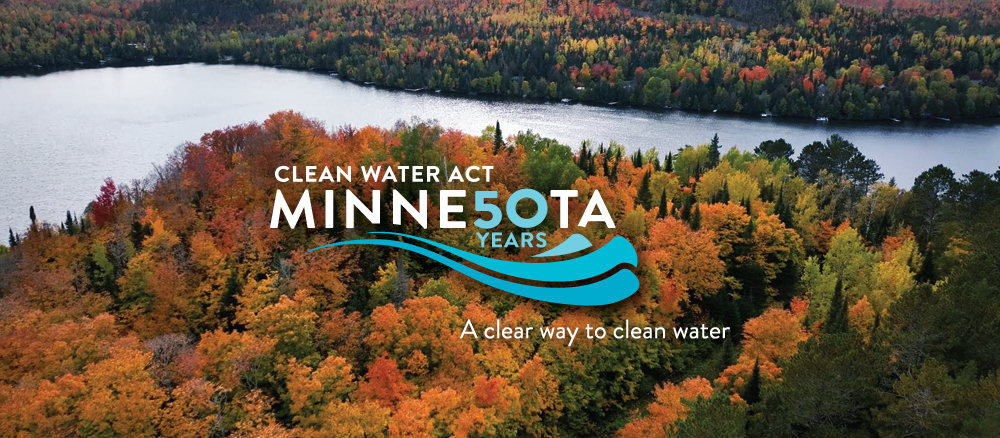Minnesotans may have been especially receptive to major federal legislation that would help us protect our prized lakes and rivers. In 1972, Congress passed the Clean Water Act, which established the framework for creating water quality standards and safeguarding water for drinking, swimming, fishing, and much more. In the 50 years since the law was passed, we’ve achieved significant clean water victories and uncovered new challenges.
Initial regulations lead to success
Before the Clean Water Act, rivers and lakes were used as disposal sites. In some cases, raw sewage, industrial discharges, and slaughterhouse waste prevented all but a few aquatic organisms from living in the water. Our philosophy as a nation was just to make waste “go away” without considering what effect it was having on ecological systems.
The Clean Water Act provided regulatory tools and made it unlawful to discharge pollution from a point source (such as a pipe, a man-made ditch, or a street drain) into navigable waters without a permit. It made the MPCA’s permitting and compliance work possible.
In Minnesota, Clean Water Act regulations and improved wastewater treatment and management practices transformed the Rainy River along the Canadian border from one with industrial waste into a world-class fishery. Requirements in wastewater treatment permits for Lake Pepin and other upstream waters have resulted in a watershed phosphorus load reduction from point sources of more than 80% over the past 15 years.
Communities have learned to see municipal wastewater treatment facilities and stormwater management requirements not as a burden, but as an opportunity to protect and enhance their valuable water resources
Setting standards
The Clean Water Act also established water quality standards. Over the past 50 years, the MPCA has led the nation with strong foundational science related to water quality standards, including phosphorus in lakes and streams and for a variety of aquatic life uses.
The MPCA assesses waters of the state and creates a list of impaired waters — those that fail to meet water quality standards — every two years. The listings are based on intensive water monitoring of the state's watersheds by the agency and its many partners. Monitoring results form the basis of the agency's recommendations for water quality restoration and protection in each watershed.
For example, in the Buffalo River Watershed, MPCA recommendations led to restoration of more than 1,900 acres of wetlands and prairie from agricultural lands, which helped decrease turbidity and create aquatic habitat.
New challenges
The MPCA has identified a growing list of pollutants and complex problems, such as sedimentation of streams and rivers, pollutants from runoff, chloride from road salt, and the forever family of chemicals known as PFAS. In addition, extreme weather events are causing the release of more contaminants into our waters and increasing water temperatures.
But we can still be hopeful.
Minnesotans are doing their part to protect water quality by volunteering to monitor lakes or streams, adopting conservation practices on farmland, keeping urban storm drains clear of debris, or reducing water usage. We all have a role to play in improving water quality.
MPCA will be celebrating the 50th anniversary of the Clean Water Act all year long by highlighting our water quality successes and steps you can take to support clean water.
Water partners can find creative resources related to the Clean Water Act anniversary to use and share on the Clean Water Act 50th anniversary page.
